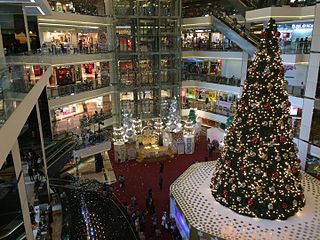 W
WChristmas in Indonesia, which has approximately 25 million Christians, is celebrated with various traditions throughout the country. In the regions with a majority of Christians, there are Christmas celebrations with ceremonies and local food. In big cities, the shopping centres are mostly decorated with plastic Christmas trees and Sinterklas. Most local television channels broadcast Christmas musical concerts and the annual, national Christmas celebration which is organised by the government. In addition to traditional foods, generally every Christmas Day is filled with cookies, like nastar, kastengel, or 'putri salju'.
 W
WChristmas in Hungary is celebrated with traditions similar to those found in other Central European countries as well as customs unique to the region.
 W
WChristmas traditions in New Zealand are similar to those in Australia in that they incorporate a mix of British and North American traditions, such as Christmas symbols featuring winter iconography. However, the timing of Christmas occurring during the Southern Hemisphere's summer season has resulted in the development of some local traditions as a result of the warmer weather. New Zealand Christmas dishes include summer fruits and vegetables, and pavlova. The New Zealand Christmas tree, the pōhutukawa, is displayed as well as the traditional Northern European tree.
 W
WChristmas in Russia, commemorating the birth of Jesus Christ, is celebrated on 25 December in the Julian calendar used by the church, which falls on 7 January in the common Gregorian calendar. Christmas is considered a high holiday by the Russian Orthodox Church, one of the 12 Great Feasts, and of only 4 Feasts preceded by a period of fasting.
 W
WSerbian Christmas traditions are customs and practices of the Serbs associated with Christmas and a period encompassing it, between the third Sunday before Christmas Day and Epiphany. There are many, complex traditions connected with this period. They vary from place to place, and in many areas have been updated or watered down to suit modern living. The Serbian name for Christmas is Božić, which is the diminutive form of the word bog ("god"), and can be translated as "young god". Christmas is celebrated for three consecutive days, starting with Christmas Day, which the Serbs call the first day of Christmas. On these days, one is to greet another person by saying "Christ is Born," which should be responded to with "Truly He is Born," or in Serbian: "Hristos se rodi" [ˈxristɔs sɛ ˈrɔdi] – "Vaistinu se rodi" [ˈʋaistinu sɛ ˈrɔdi].
 W
WTraditional Ukrainian Christmas festivities start on Christmas Eve, which is celebrated on 6 January following the Julian calendar. The Christmas celebrations end on 19 January, the date of "Yordan" or Epiphany in the Julian calendar.
 W
WThe Vatican Christmas Tree, also called the Saint Peter's Square Christmas Tree, is the decorated tree that is erected annually in the Saint Peter's Square directly in front of St. Peter's Basilica in the Vatican City to celebrate the Christmas holiday season.